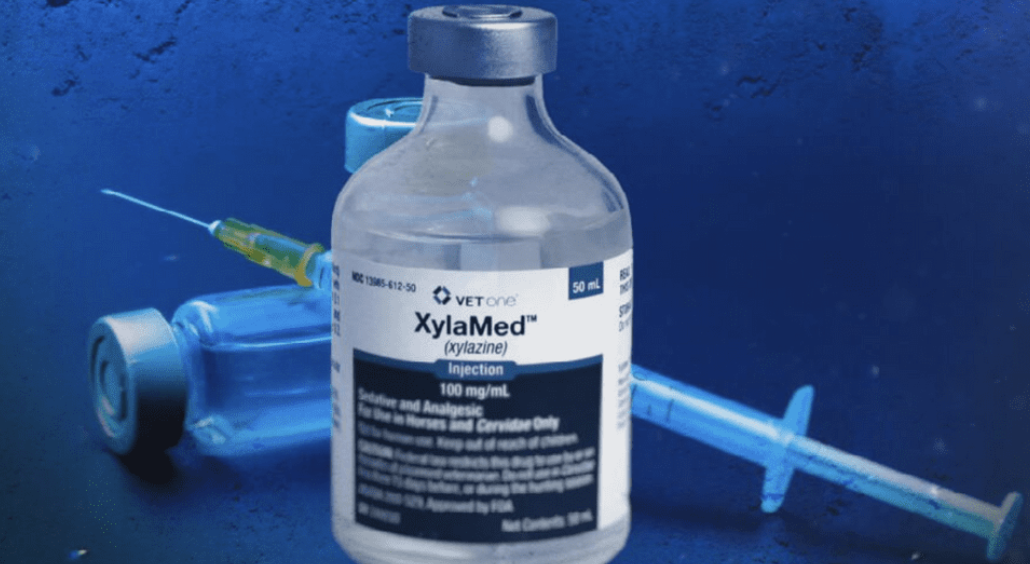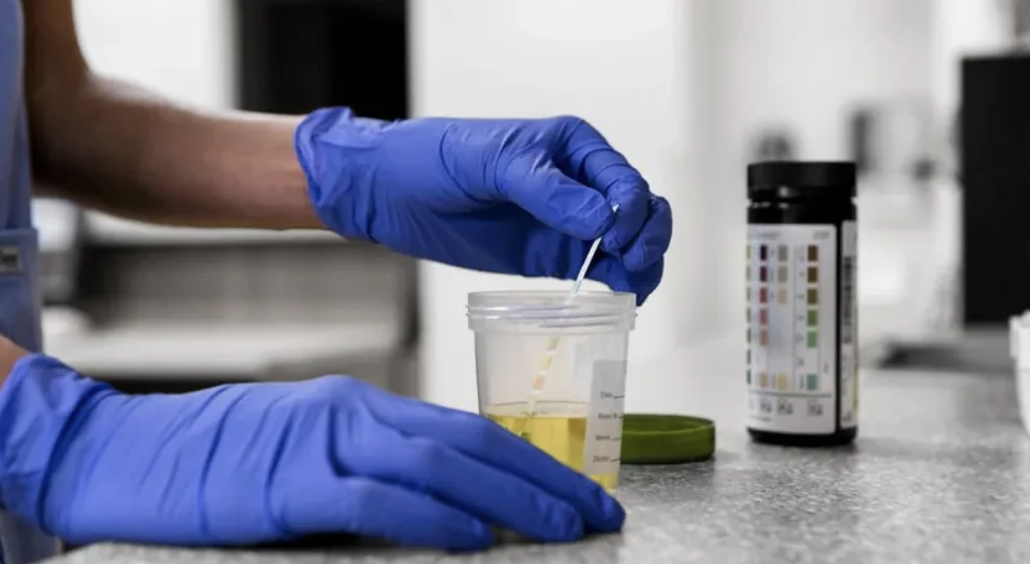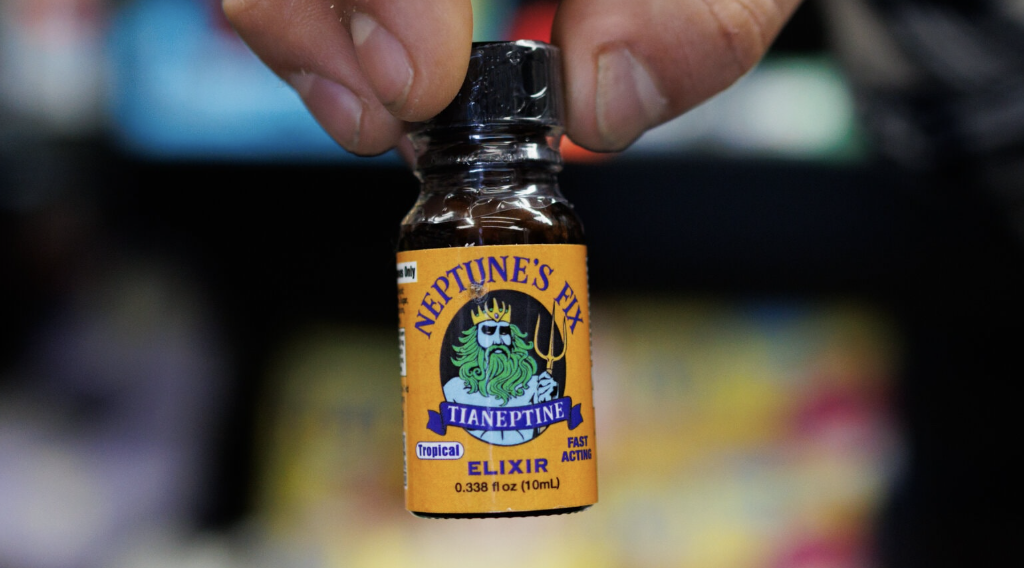Xylazine is extremely dangerous because it doesn’t respond to naloxone, the common opioid overdose reversal drug. This raises the question: why is xylazine so dangerous? It’s often mixed with opioids like fentanyl, leading to fatal overdoses. Xylazine also causes severe tissue damage and necrosis. As its use in street drugs increases, understanding its risks is essential.
Key Takeaways
- Xylazine is a non-opioid veterinary tranquilizer that poses unique dangers due to its ineffectiveness to be reversed by naloxone, increasing risks of unnoticed overdoses and severe health complications.
- The combination of xylazine with opioids like fentanyl significantly raises the risk of fatal overdose and severe tissue damage, complicating treatment efforts due to users’ unawareness of its presence in the drugs they consume.
- The spread of xylazine in the U.S. drug supply has prompted federal health alerts, with increasing prevalence among fentanyl mixtures, necessitating enhanced monitoring, regulatory actions, and harm reduction strategies.
What makes xylazine uniquely dangerous compared to other street drugs?
Xylazine stands out in the world of illicit drugs for several reasons:
- It is a non-opioid veterinary tranquilizer that causes sedation without euphoric effects, unlike common opioids or stimulants.
- It does not respond to opioid reversal drugs like naloxone, making overdoses involving xylazine particularly perilous.
- The lack of euphoria increases the risk of unnoticed overdose.
- It can cause necrotic tissue damage, leading to severe health complications among drug users.
The insidious nature of xylazine is compounded when it is mixed with other substances like fentanyl or heroin, both of which are common in cases of heroin addiction. This combination significantly heightens the risk of fatal overdoses due to the increased potency and adverse health effects of the drug mixture. As xylazine spreads through the illicit drug supply, it becomes a hidden danger, often unknown to those who consume it, making it a silent but deadly addition to the drug landscape.
Xylazine is not an opioid
Xylazine is classified as a veterinary tranquilizer and is not part of the opioid family, distinguishing it from substances like fentanyl and heroin. While it can produce effects similar to opioids, such as sedation, it does not activate opioid receptors. This means that naloxone, a medication used to reverse opioid overdoses, is ineffective against xylazine. This non-opioid classification makes xylazine particularly dangerous in overdose situations, as traditional opioid overdose treatments do not work.
The central nervous system depressant effects of xylazine lead to sedation, potentially increasing overdose risks when mixed with other substances. Users often unknowingly consume xylazine when it is mixed with other drugs, complicating the recognition and treatment of overdose situations. The fact that xylazine does not respond to naloxone further underscores its unique and deadly nature within the realm of street drugs.

Combined use with fentanyl or heroin
The combination of xylazine with opioids like fentanyl or heroin significantly heightens the risk of fatal overdoses due to the increased potency of the drug mixture. Key concerns include:
- Xylazine mixed with fentanyl can lead to severe tissue damage and necrosis, especially in individuals who inject these substances.
- Users of xylazine and fentanyl and xylazine combinations are often unaware of the presence of xylazine.
- This unawareness complicates treatment efforts since naloxone is ineffective against xylazine.
The trafficking of xylazine mixed with fentanyl has been reported in nearly every state in the U.S., showcasing the widespread nature of this dangerous combination. This widespread distribution of xylazine-adulterated fentanyl raises significant public health concerns and underscores the urgency of addressing the larger opioid addiction crisis.
What are the physical dangers of xylazine use?
Xylazine use poses significant health risks, including:
- Severe skin ulcers that can occur at injection sites and in areas far removed from those sites
- Necrotic ulcers that are often large and progressive
- Increased risk of infection due to impaired healing caused by reduced blood flow
- Severe health consequences, including potential amputations
The high overdose risk associated with xylazine is another critical concern. Unlike opioids, xylazine does not respond to naloxone, complicating overdose management and increasing the risk of fatal outcomes. The absence of an FDA-approved reversal agent for xylazine means that healthcare providers must rely on supportive care and other interventions to manage overdose cases. This lack of a targeted antidote makes xylazine overdoses particularly challenging to treat and underscores the urgent need for effective medical protocols.
Skin ulcers and tissue necrosis
The necrotic ulcers associated with xylazine use can occur not only at injection sites but also in areas far removed from those sites. These ulcers are often large, progressive, and can lead to infection due to impaired healing caused by reduced blood flow. Xylazine-induced skin ulcers are particularly concerning because they are not responsive to traditional opioid overdose treatments, complicating management.
Individuals using xylazine often exhibit multiple, large, necrotic ulcers that can develop at injection sites and even in areas distant from these sites. The vasoconstrictive properties of xylazine reduce blood flow to the skin, impairing healing and leading to severe skin ulcers. Wound care for xylazine-induced ulcers often includes methods to maintain a moist environment, which can facilitate better healing outcomes.
A study indicated that people who inject drugs and use xylazine have a significantly higher prevalence of skin ulcers compared to those who do not. These severe skin conditions require extensive medical intervention, and untreated wounds can lead to serious infections, necessitating hospitalization and even amputations in extreme cases. The use of injection drug practices exacerbates these health issues.
High overdose risk and no FDA-approved reversal
Xylazine is not an opioid, meaning that typical opioid overdose treatments like naloxone are ineffective. The absence of an FDA-approved reversal agent for xylazine complicates overdose management and increases the risk of fatal outcomes. Xylazine can cause extremely low breathing rates and blood pressure, and there are no FDA-approved medications to reverse its effects.
Experts recommend administering opioid overdose reversal drugs for suspected xylazine overdoses, despite these drugs not affecting xylazine itself. Routine toxicology tests do not identify xylazine, requiring special analytical methods to detect its presence in overdose cases as part of an opioid overdose prevention strategy.
Healthcare providers are advised to consider xylazine exposure when patients show non-responsiveness to naloxone or display severe skin ulcerations.
How does xylazine affect the brain and body? (Mechanism of action)
Xylazine acts as a central nervous system depressant by stimulating alpha-2 receptors, leading to drowsiness, a reduction in heart rate, and impaired cardiovascular regulation. This mechanism of action makes xylazine particularly dangerous, as it can cause severe respiratory and cardiovascular issues. Understanding how xylazine affects the brain and body is crucial for comprehending the full extent of its dangers.
The impact of xylazine on the central nervous system and cardiovascular system will be detailed in the following subsections. These effects contribute to the high risk of overdose and severe health complications among users, highlighting the need for effective treatment and intervention strategies.
Impact on the central nervous system
Xylazine acts as a depressant on the central nervous system, leading to:
- Drowsiness and reduced brain activity
- Dangerously low levels of heart rate and blood pressure
- Extreme sedation effects that may lead to respiratory failure, especially when combined with other depressants.
The use of xylazine can cause dangerously low levels of breathing, heart rate, and blood pressure. Xylazine’s sedative effects can be life-threatening, especially when used in conjunction with other depressants like opioids.
Research indicates that xylazine can lead to severe skin and tissue wounds due to its impact on the body’s healing processes.
Effects on the cardiovascular system
Xylazine can cause significant alterations in heart rate and blood pressure, leading to cardiovascular instability. The use of xylazine may result in bradycardia, which is an abnormally slow heart rate, posing risks for cardiovascular health. Xylazine administration can lead to hypotension, a condition characterized by low blood pressure that can cause fainting and shock.
Complications from xylazine use may include arrhythmias, which are irregular heartbeats that can be life-threatening. In severe cases, xylazine can contribute to cardiovascular collapse, which is a critical and potentially fatal condition. These effects on the cardiovascular system underscore the severe health risks associated with xylazine use.
Why is xylazine abuse growing in the U.S. drug supply?
The presence of xylazine in drugs has been increasing, with around 23% of fentanyl powder and 7% of fentanyl pills seized containing this emerging novel substance in 2022. This increase in xylazine usage within the U.S. drug market is partly due to its potency when mixed with opioids, making it appealing for users seeking prolonged effects.
Drug dealers are motivated to add xylazine to street drugs for several reasons:
- As a low-cost cutting agent to extend the effects of opioids
- To reduce costs
- To enhance the effects of more expensive substances like fentanyl
- To make these substances more profitable in the market, including synthetic opioid mixtures.
The spread of xylazine from Puerto Rico to major U.S. cities has prompted federal health alerts and emergency responses.
Illicit drug market motivations
Xylazine is often added to other illegal drugs for the following reasons:
- To enhance their effects
- To increase their weight, making them more profitable in the market
- As a cost-effective way to enhance the effects of more expensive substances like fentanyl
This practice is a significant factor in the growing presence of xylazine in the U.S. drug supply and reflects the larger issue of polysubstance abuse.
Geographic spread and DEA alerts
The DEA has reported that xylazine has been identified in drug samples across 48 out of 50 states, signaling its widespread geographic distribution. Xylazine has been detected in drug samples across 30 states, with significant concentrations in areas like Philadelphia and Maryland. The widespread presence of xylazine in the U.S. drug market underscores the urgency of addressing this emerging threat.
Research indicates that xylazine’s presence in drug overdoses is rising, particularly in the Northeast, and it is increasingly detected in combination with illicit fentanyl. The DEA has observed xylazine mixed with fentanyl in nearly all states, indicating a widespread presence of this adulterant in the U.S. drug market.
The DEA has issued safety alerts regarding xylazine due to its rising prevalence and the associated health risks, particularly in urban centers.
What treatment options exist for xylazine exposure or overdose?
Current medical protocols for xylazine exposure or overdose include supportive care, wound management, and opioid reversal only if fentanyl is also present. The lack of a targeted antidote for xylazine complicates treatment, making it essential to rely on supportive care and other interventions. Understanding the appropriate emergency response protocols and long-term health complications is crucial for managing xylazine exposure.
The following subsections will detail emergency response protocols and long-term health complications, providing a comprehensive overview of the treatment options available for xylazine exposure or overdose in the emergency department.
Emergency response protocols
First responders are advised to:
- Provide rescue breaths for individuals showing signs of xylazine use due to its effect on slowing breathing.
- Administer naloxone in case of a suspected overdose involving xylazine, noting that it will not counteract xylazine’s effects.
- Call 911 for emergency medical assistance after naloxone is given, as xylazine’s respiratory effects may persist.
Performing rescue breaths is particularly important for individuals who have used xylazine due to its tendency to slow breathing. First responders should consider the possibility of xylazine contributing to an overdose if naloxone does not produce expected results. Individuals experiencing an overdose should be placed in a recovery position to keep their airway clear while awaiting medical help.
Long-term health complications
Infections from untreated wounds associated with xylazine use can lead to severe health issues, including amputations. Chronic use of xylazine leads to severe skin wounds and abscesses that can become infected, resulting in patches of dead tissue requiring amputation in extreme cases. Skin sores associated with xylazine use can occur not only at injection sites but also in areas where the drug is ingested through other methods, such as smoking or snorting.
Wound healing from xylazine-related wounds is significantly slower for individuals who continue using substances, which complicates recovery. Untreated xylazine wounds can lead to serious infections, necessitating extensive medical intervention, including possible hospitalization, especially when considering the condition of the wound bed.
These long-term health complications highlight the need for comprehensive medical care and support people for individuals affected by xylazine use.
How are authorities responding to the xylazine crisis?
The White House is implementing a national response plan aimed at addressing the dangers posed by xylazine when combined with fentanyl. Federal agencies are increasingly collaborating to address the risks associated with xylazine, focusing on monitoring and regulation. These efforts include legal, medical, and public health initiatives to mitigate the impact of xylazine on public health.
The following subsections will detail the actions taken by the Drug Enforcement Administration and FDA, as well as harm reduction strategies being implemented by healthcare professionals and health departments to educate users and provide necessary resources.
DEA and FDA actions
The DEA is considering scheduling xylazine, while the FDA has issued import bans and monitoring directives to control the spread of this dangerous substance. These actions are part of a broader effort to regulate xylazine and reduce its prevalence in the U.S. drug supply.
Harm reduction strategies
Several harm reduction initiatives are being implemented, including:
- Educational programs to inform users about the dangers of xylazine.
- Testing substances for xylazine and fentanyl using fentanyl test strips to help users make informed decisions about their drug use.
- Health care providers educating individuals on wound care to manage and prevent complications from xylazine-related injuries.
Key safety practices and considerations for those at risk of xylazine-related wounds include:
- Using clean syringes and avoiding contaminated equipment to ensure safer injection practices.
- Monitoring for prolonged sedation caused by xylazine, which can lead to serious risks such as pressure ulcers and blood clots.
- Repositioning individuals carefully to prevent complications from sedation.
- Having naloxone readily available, noting that it only addresses opioid overdoses and is ineffective against xylazine.
Bottom Line: Why is xylazine so dangerous?
Xylazine is a uniquely dangerous substance in the world of street drugs, posing significant health risks and complicating overdose treatment. Its non-opioid nature means that traditional opioid reversal drugs like naloxone are ineffective, increasing the risk of fatal outcomes. The combination of xylazine with opioids like fentanyl further heightens these dangers, leading to severe tissue damage and increased overdose fatalities.
The growing prevalence of xylazine in the U.S. drug supply necessitates urgent action from authorities and healthcare providers. Through a combination of legal measures, harm reduction strategies, and public education, efforts are being made to mitigate the impact of xylazine. By understanding the dangers of xylazine and implementing effective treatment and prevention strategies, we can work towards reducing the harm caused by this lethal substance.
FAQs about xylazine dangers
Can naloxone reverse xylazine?
Naloxone cannot reverse xylazine because it is not an opioid. Naloxone is effective against opioids like fentanyl but does not counteract xylazine’s effects.
What does xylazine do to the skin?
Xylazine can cause severe skin infections, ulcers, and necrosis, leading to significant tissue damage and potentially requiring amputation.
Why is it called ‘tranq dope’?
Xylazine is often referred to as “tranq dope” because it is a veterinary tranquilizer that causes sedation and is commonly mixed with other street drugs.
Is xylazine spreading in the U.S.?
Yes, xylazine has been detected in drug samples across 48 out of 50 states, with significant concentrations in major cities.
What are the long-term health risks of xylazine use?
Long-term health risks include severe skin ulcers, infections, tissue necrosis, and potential amputations. Chronic use also complicates wound healing and recovery.















